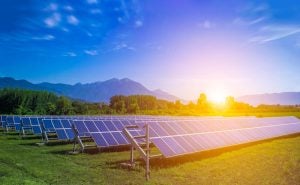
Why RGGI is a Good Deal for Virginians
With unprecedented droughts, wildfires, floods and heat waves impacting communities nationwide, it’s clear that climate change is not a threat in some distant future – we’re dealing with its ramifications today. Virginians know this well, having experienced eight different billion-dollar disaster events (three tropical cyclones, four severe storms, and one winter storm) in 2021 alone. Consequently, it’s imperative that we act immediately to address the climate crisis. Virginia took a major step toward doing just that by linking to the Regional Greenhouse Gas Initiative (RGGI) in 2021 – a step Governor Youngkin has, alarmingly, indicated he wants to reverse.
Leaving RGGI risks derailing Virginia from continued progress to reduce climate pollution and will eliminate funds for existing programs that help protect Virginians from devastating floods and that save electric ratepayers money by lowering their energy usage.
Act now: Tell Gov. Youngkin to keep Virginia in RGGI
RGGI is a proven program for combating climate pollution while investing in solutions that will make Virginia more resilient. Here are five reasons that make clear RGGI is a good deal for Virginia.
1. RGGI is a proven program for reducing climate pollution.
RGGI has been operational for over a decade, cutting climate pollution from power plants in half in member states. The program uses a market-based approach that sets a total limit on pollution for the region that declines over time. Polluters must then purchase an “allowance” for each ton of pollution they produce. This compels companies to invest and innovate to reduce their pollution, including by switching to cleaner forms of power generation, advancing energy efficiency, creating programs to manage electricity usage, and more. There are numerous protections in place to ensure the price of allowances remains stable and predictable, and every independent market monitoring report of the decade-long program has found that the market has functioned smoothly.
There are currently 11 mid-Atlantic and Northeastern states in RGGI, with diverse energy production and needs, but all are driving carbon emissions down using this flexible, market-based approach in ways that suit the unique needs of each state. RGGI’s historic reductions in climate pollution have been achieved twice as fast as the nation as a whole. This success shows the power of setting firm emissions limits and letting polluters determine how best to meet those limits, while giving states the flexibility to reinvest the proceeds from the program.
2. Virginia is already dealing with the costly impacts of the climate crisis, and RGGI provides resources to help protect communities.
With more frequent and intense storms, Virginians are experiencing higher flood risk that threatens infrastructure, businesses, and communities. The Hampton Roads region is experiencing the highest rates of sea level rise along the entire Atlantic seaboard. By 2080, nearly 1 million residents will be living in homes exposed to major coastal flooding and flood damages are estimated to skyrocket to $5.1 billion annually.
RGGI takes a two-pronged approach to this threat: reducing the climate pollution that drives climate impacts like flooding, while investing in Virginia communities to build resilience in the face of flooding and other climate threats. Proceeds from the RGGI program go toward the Virginia Community Flood Preparedness Fund (CFPF), which provides loans and grants for projects, studies, capacity building and planning in high flood-risk areas across the state. Since joining RGGI, Virginia has already awarded over $30 million through the CFPF and has $40 million available in the next grant round, which closes in April 2022. At least a quarter of funding must go toward projects in low-wealth and rural communities, where resources are greatly needed.
3. RGGI will create jobs and grow the economy while saving Virginians’ money.
Virginia is ranked 10th in the nation for clean energy employment with 88,370 jobs. Currently, the state holds 8,831 jobs in renewable energy, including in solar and wind; 2,305 jobs in storage and grid; 71,505 jobs in energy efficiency; 277 jobs in clean fuels and 5,452 jobs in clean vehicles.
These industries are all poised for growth as Virginia continues to invest in its clean economy through RGGI and other programs. Numerous analyses of the RGGI program have shown what we intuitively know to be true: Growing jobs in the clean energy economy, reducing pollution that harms human health and the environment, and investing in workers and local communities has substantial net benefits. One analysis found that over its first three compliance periods, RGGI created nearly 45,000 job-years in the region.
The RGGI program has also provided for nearly $4 billion in investments by states in programs of their choosing. Many states invest the proceeds from the program in energy efficiency, direct electric bill payment assistance, clean energy projects and job training. The pie charts below show where funds were invested across states in 2019.
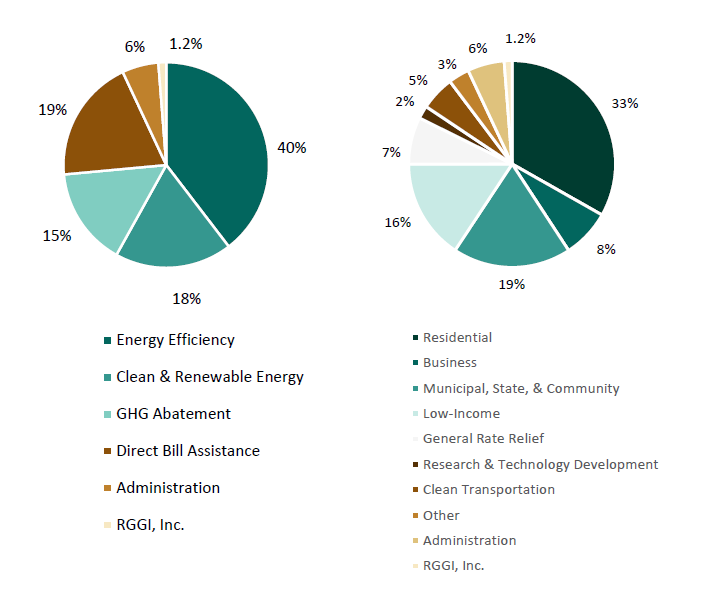
In Virginia, RGGI investments are directed toward flood preparedness and coastal resilience (45%), energy efficiency programs for low-income Virginians (52%) and statewide climate planning and program administration (3%).
Across RGGI states, investments from 2019 alone are responsible for saving $112 million in energy bills and reducing an additional 167,000 tons of CO2, equal to the emissions produced from nearly 33,000 passenger vehicles driven for one year.
In 2020 (before Virginia was participating in RGGI), Virginia had the eighth-highest average monthly residential electricity bill in the nation. Investments made through RGGI can help Virginians save money on electricity by shifting the grid toward cleaner, more cost-effective resources that can hedge against volatile fossil fuel prices and by making investments to support consumers through energy efficiency programs. A 2018 Analysis Group study found that energy efficiency programs funded by RGGI can reduce bills of not just those who implement energy efficiency improvements, but all residents in the region with a total estimated benefit of $725 million.
4. RGGI will benefit Virginians’ health.
When carbon pollution is reduced, there are often significant reductions of other health-harming pollution, including soot and smog. As RGGI has reduced carbon pollution across the region, communities have also seen declining levels of soot and smog.
In fact, a study completed in 2017 found significant health benefits from RGGI’s air pollution reductions, including avoided deaths, heart attacks and cases of asthma.
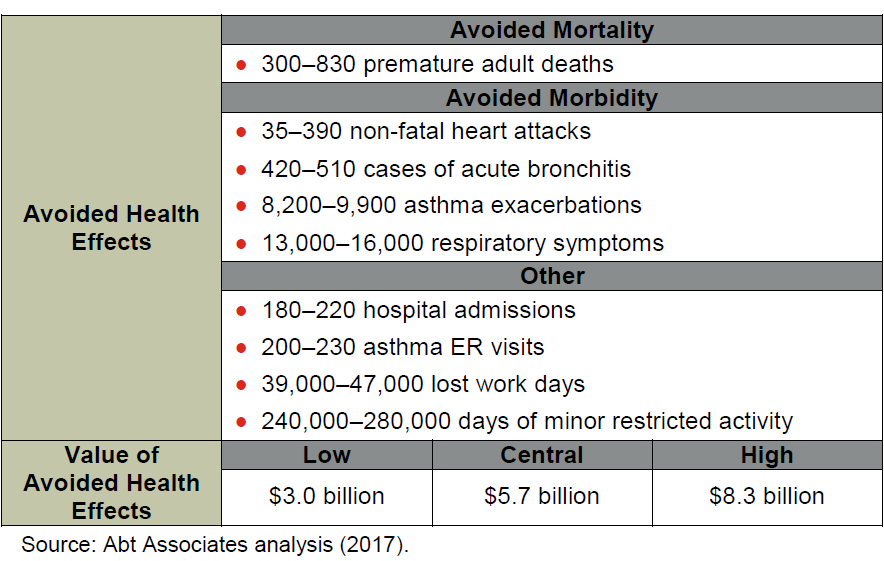
Another study by leading scientists found that reduced levels of soot pollution due to RGGI from 2009-2014 benefited children’s health in particular, including avoiding cases of asthma, preterm births, cases of autism spectrum disorder and more harmful health impacts. The avoided costs of these health impacts on children are estimated at $191-350 million.
5. There is strong support for climate action in Virginia.
The climate crisis is touching every corner of Virginia and all sectors of our economy by threatening the stability of our power grid; outdoor worker safety during punishing heat waves; safety and resiliency of our homes, schools, hospitals, businesses, and places of worship; our ability to produce food; and more. Virginians are raising their voices to demand the common-sense leadership we need to rein in carbon pollution and to make the state more resilient to the climate challenges of today and the future. Poll after poll shows Virginians, like others across the country, are increasingly concerned about climate change and expect their leaders to take action. A 2021 EDF Action poll found 77% of Virginia voters wanted the next governor to address the state’s flood risk and 61% of voters support getting to zero carbon emissions by 2050. RGGI is critical to achieving both of these bipartisan goals.
As neighboring Republican governor Larry Hogan once noted on continuing Maryland’s commitment to RGGI: “Maryland is committed to finding real bipartisan, common sense solutions to protect our environment, combat climate change, and improve our air quality. By working together, we are showing that it is possible to find consensus to protect our natural resources, promote clean energy, and grow our economy for current and future generations.”
We can’t continue to kick the can down the road. Virginians are supportive of taking action to safeguard health and prosperity for their communities and future generations.
Commonsense policies like RGGI are just one piece of the puzzle needed to reduce Virginia’s contribution to global climate change, but it is a proven, flexible way to get where we have to go at the national level, too. The power sector will be the linchpin of a stronger, clean U.S. economy, as other sectors like transportation and buildings increasingly rely on clean energy, rather than fossil fuels. That’s why it’s essential that states like Virginia continue to lead the way.











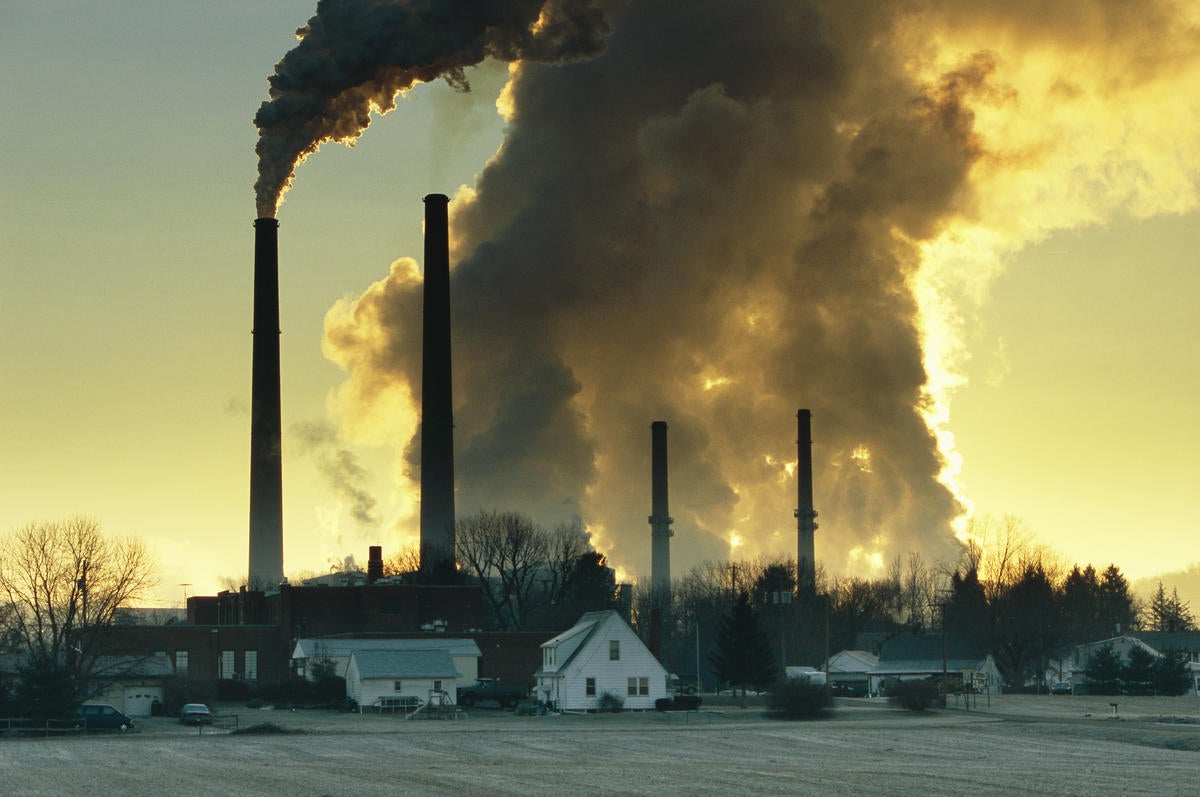
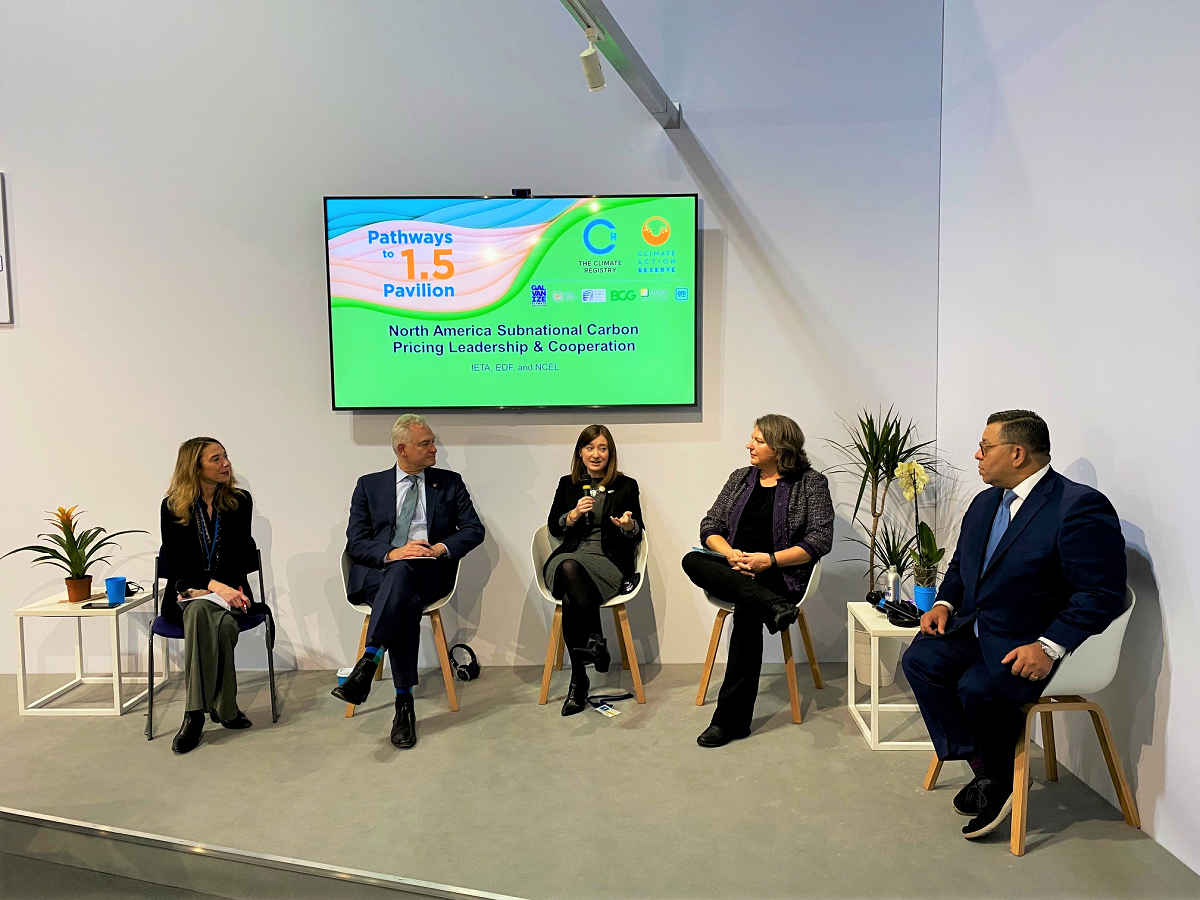
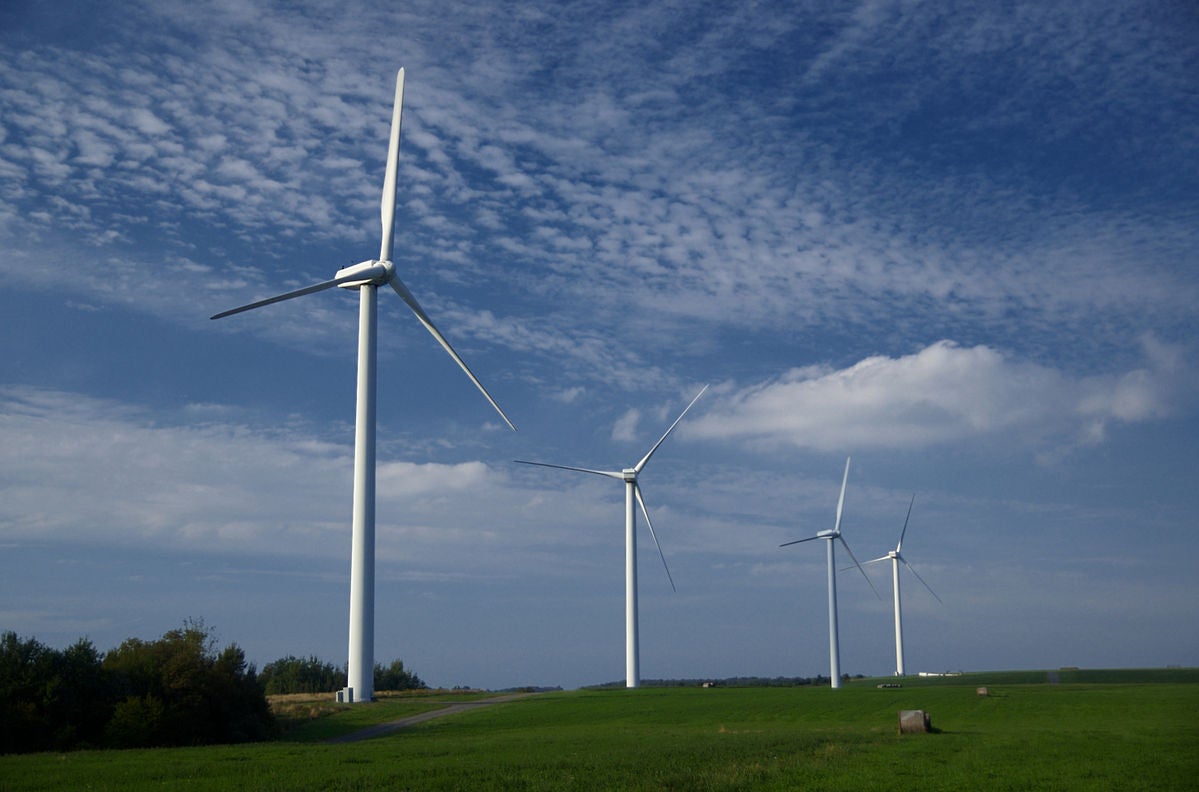
One Comment
1. RGGI is not a proven strategy for reducing climate. Yes, many states that are members of RGGI have seen reductions in air pollution. However, this is largely a result of other policies theses states have enacted, like renewable portfolio standards (RPS).
2. RGGI does not provide resources to protect communities. Ratepayers provide resources to protect communities through a tax hidden in their electric bills. RGGI redistributes these resources.
3. RGGI will cost Virginians money. Currently, a typical customer’s electric bill is increased by about $2.40, with an expected increase to $4.40 later this year.
4. Virginia’s reductions in air pollution is being driven by its RPS program, not by RGGI.
5. Sure.
Virginia’s involvement in RGGI is redundant because of its RPS program. It’s redistribution of rates to projects that mitigate adverse effects of climate change is commendable. However, this redistribution of wealth should take the form of a tax rather than a hidden charge in customer’s bills. In other words, RGGI is not particularly transparent.